Hello everyone, this is Uri from the Guerrilla Poker team. In this episode, I want to answer a question from one of my viewers about what I think of Charlie Carrel's latest NL100 video.
Overall, I like Charlie's approach to poker. I consider him a very creative and out-of-the-box thinking player. His success proves in many ways that it is not necessary to play like other regs. However, this does not mean that I agree with all of his explanations. In some ways, our approaches are similar, but they also have many differences.
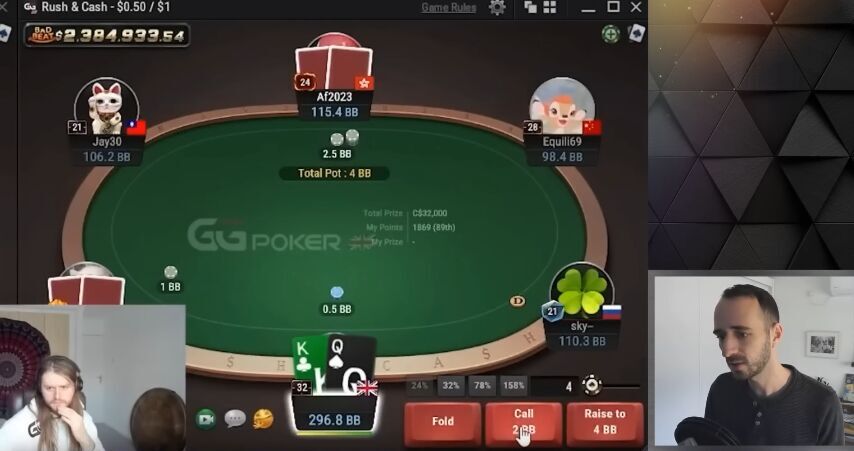
Here Charlie calls with KQo in the small blind against a 2.5x open from the middle position, arguing that although the action is loose, he will have an advantage post flop. I understand that he approaches the situation intuitively. I don't think he specifically studied the rake structure at NL100 GG Poker. I agree that this is too loose. I also agree that Charlie has an edge post flop. However, I don't like it when this consideration is used in a tutorial video to justify a negative action. The spectators will not always have an advantage over their opponents on the post flop. So if our goal is to create educational content, I can't recommend lines like that.
Of course, Charlie is several levels ahead of NL100 opponents and will outplay them left and right. And we'll be happy to look at it, but at the same time, we would like to see the correct play preflop.
As for this case, I'm not quite sure that Charlie's edge is enough to turn a negative situation into a positive one, given the huge rake. I think he doesn't fully understand how much of a borderline hoax he is getting involved in.
This is not the most important point, but it seems important to me to tell the audience about it. It's too loose a call, don't play like that! There is a noticeable difference between the sizings of 2.5bb, 2.1bb, 2bb, as well as between the rake structure in different rooms and at different stakes.
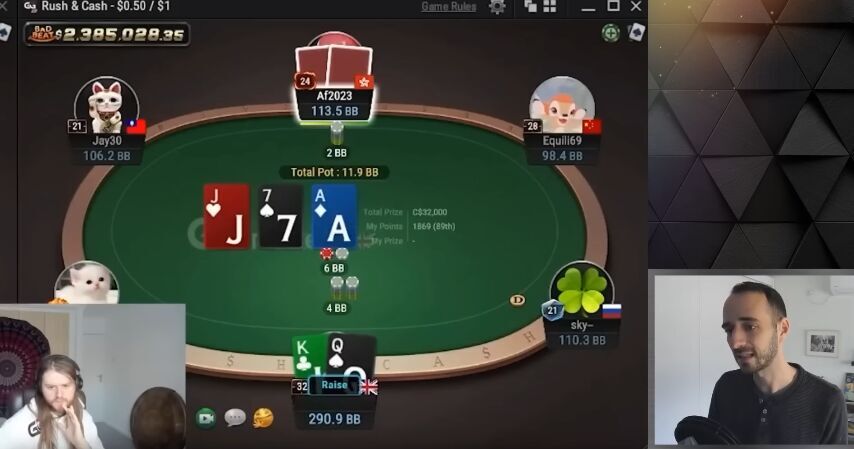
Charlie combats a third pot c-bet from his opponent with a min-raise. I think he makes such decisions instinctively. As you know, I've done a course on check-raises, and I'm well aware of when and how to use them. You can believe me – his line is right. This can indeed be played in certain situations, the min-raise has a clear rationale. I don't know if Charlie can explain it, but I'm sure he feels these lines intuitively.
Any check-raise size prevents some portion of Villain's range from being realized. Maybe just for texture a min-raise is not ideal as Villain will have a lot of pairs, gutshots, backdoor draws, and so on – our sizing is a bit small. But on a drier flop like the min raise works just fine.
Charlie's style is largely psychological: he confuses opponents, driving them into unusual situations and gaining a lot of information from the combination of their decisions and timings. Due to his vast experience, he often turns out to be more cunning and outplays his opponents.
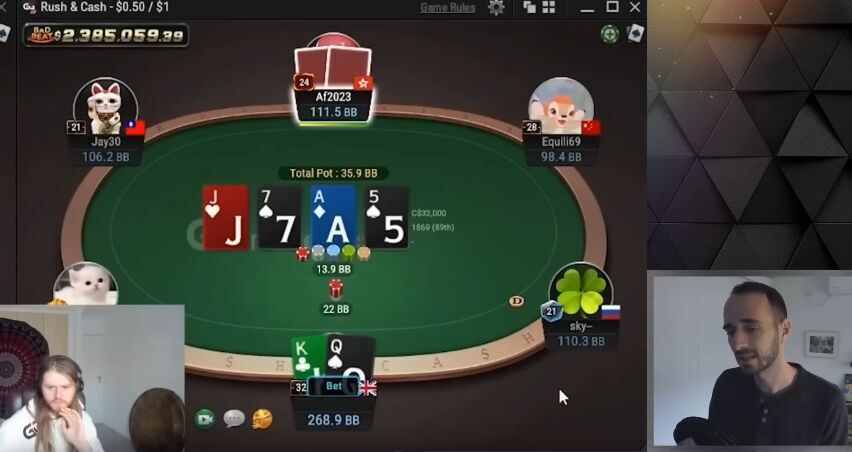
We got called on the flop. If Charlie is right, and people really rarely slowplay strong hands, the turn overbet wins the pot far more often than is necessary for a positive expectation.
From the outside, this hand may look like he's just randomly pressing buttons, but I'm sure that's not really the case.
(In the hand, the opponent immediately folded the cards.)
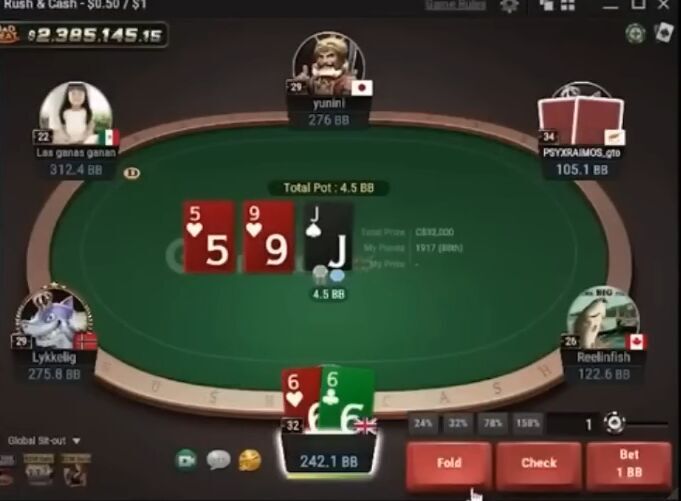
Here Charlie says that he would c-bet without a heart, but he likes to check with a heart because he can call hearts on the turn.
He also clearly assesses this situation with the help of intuition. You can check behind both with and without a heart. In theory, having hearts means higher equity in the hand, so if we decide to c-bet and get called, sixes with a heart are worth more than no hearts. Therefore, the rate for defense with with a heart is more profitable. However, in reality, the difference in waiting between the lines is minimal. Do with the sixes what you want :)
He checks, and the turn comes . Villain bets 2.5bb and Charlie calls as he intended. On the river comes out . Villain thinks for a few seconds and bets 7.1bb into a 9.5bb pot. Make no mistake, the timings and sizings of both the turn and the river have not escaped Charlie's attention. He calls almost instantly.
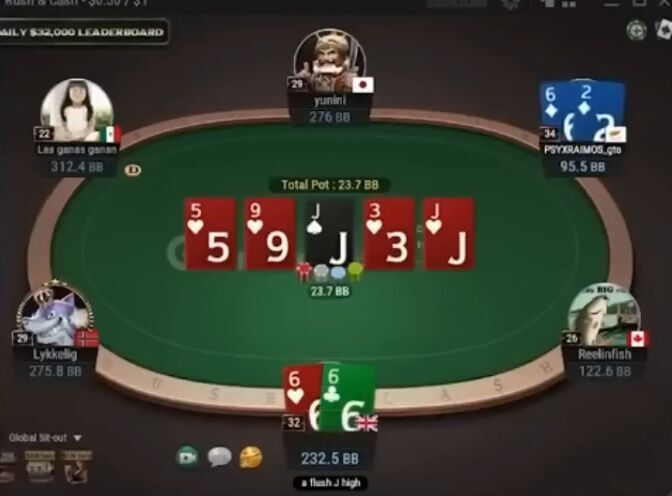
We can ask ourselves why he does not think at all, since he has a regular bluff catcher. I can't say exactly what influenced his decision, but I think he was suspicious of the combination of turn sizing and a large river bet, which the opponent represents a strong flush. That's why I say that Charlie is a strong player: I see the logic in his decisions and understand that he thinks about playing at a fairly high level.
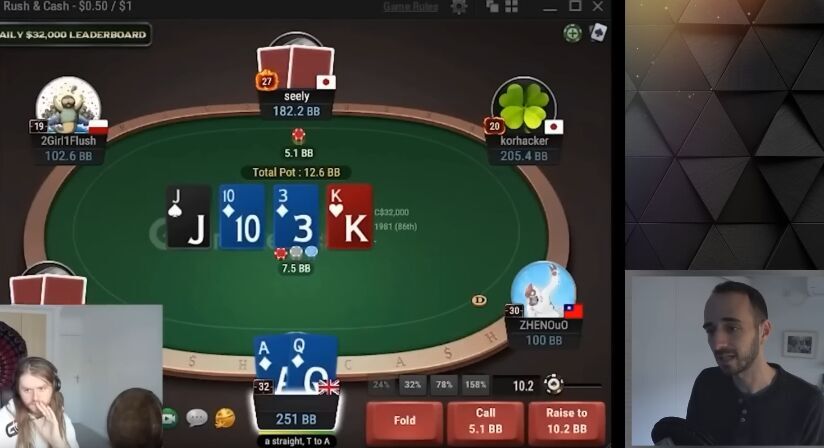
In this hand, Charlie called from the small blind and the BB also called. With AQs, unlike KQo, you can call up from the small blind, but I still recommend 3-betting.
The flop has been checked. When he sees a bet on the turn, he says that he should try to get the maximum against two pair, because the size of the villain’s bet is very similar to two pair. He then raises to 19.2bb. The BB folds and the second-position player calls.
On the river Charlie quickly bets 75% of the pot. Villain thinks for a very long time and calls.
This hand shows why Charlie is destroying these stakes. He easily narrows down the ranges of opponents by their actions, forcing them to literally play with open cards, while they do not understand his ranges at all. This is a frankly unequal fight. At higher stakes, regulars are not as transparent and better able to read opponents, but here the game is just one goal.
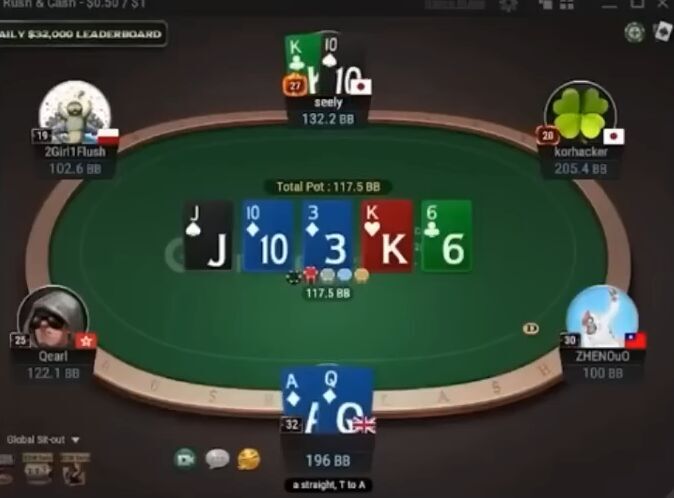
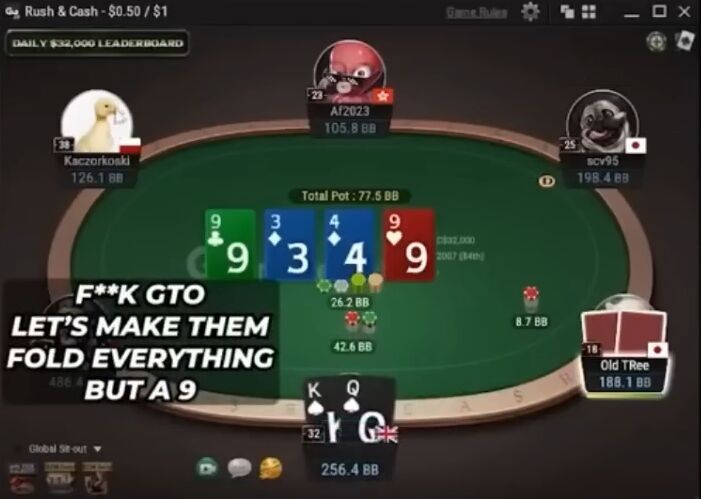
Meanwhile, on another table, Charlie is 3-betting preflop, betting about a third on the flop, and on the turn, his opponent is in the lead on a repeat nine. "Fuck the GTO," says Charlie, "let's make him fold everything but a nine!" – and makes a big raise, which I think is good for GTO. Nice line, I like it. Charlie, in my opinion, does not know the GTO strategy well enough, but he follows it much more often than he thinks. His poker intuition is very good!
We shouldn't go on the defensive just because Villain has a few trips in his range. Repeat nine can't stop us from getting money from and willingly fold, and since we need bluff raises, look like a good candidate. Maybe the solver will prefer to bluff with some other combinations, but I have a suspicion that fits.
Bluffs are taken from the bottom of the calling range. Therefore, trash hands that should fold will fold, but , in my opinion, are on the very boundary of the call, therefore, they can also be used for bluffing. Good and logical bluff.
(Opponent quickly folded.)
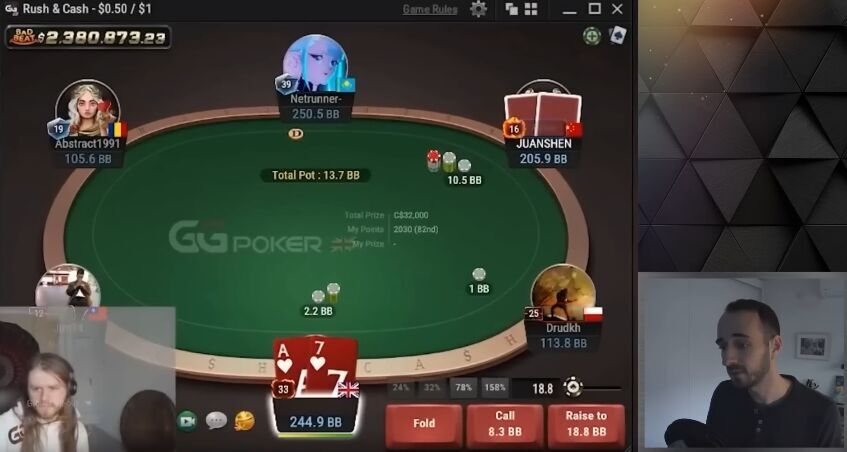
Here he says that at 200bb it's probably a fold to a 3bet, but who likes to fold?! – and calls. I agree, the decision is closer to the fold. On the other hand, most online players have little experience playing deep stacks, and I'm sure Charlie understands this game much better.
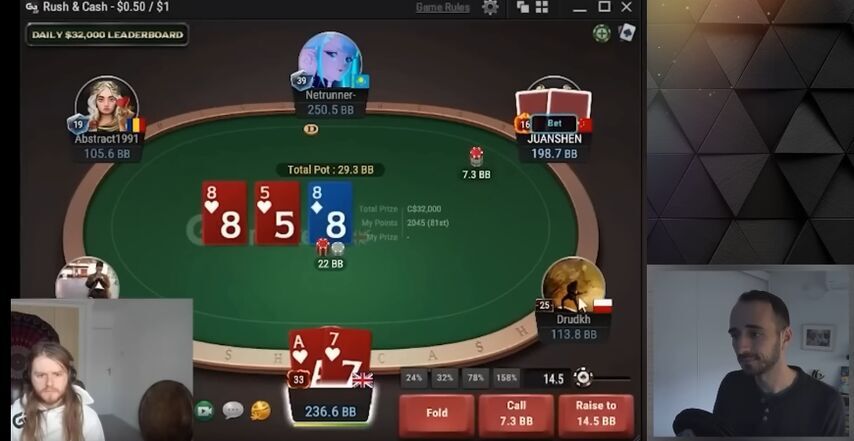
On the flop, he calls. The turn hits the flush, Charlie's opponent checks, and he checks back, saying he's setting a trap.
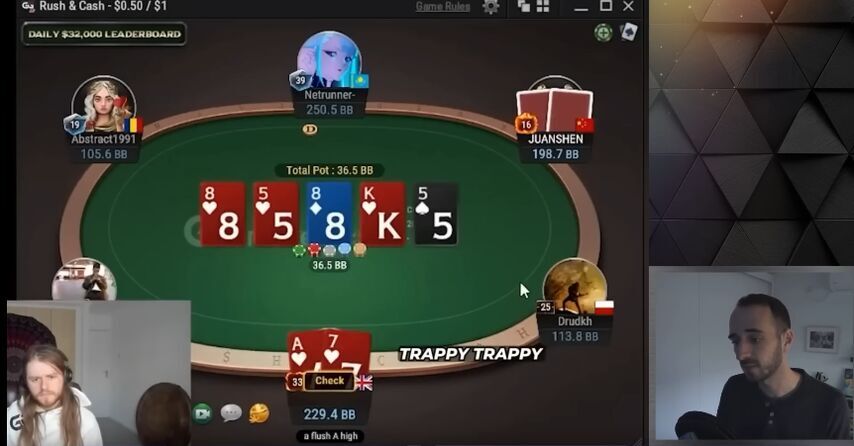
I'm not a big fan of his solution. Slowplaying with his hand is hardly justified from a GTO point of view, and if done, then at a very low frequency. It's also hardly useful in the metagame. These lines are good against creative players like Charlie himself, but don't expect big check-raises or overbets from an NL100 field. In general, I do not like the check, and I do not recommend it to you either.
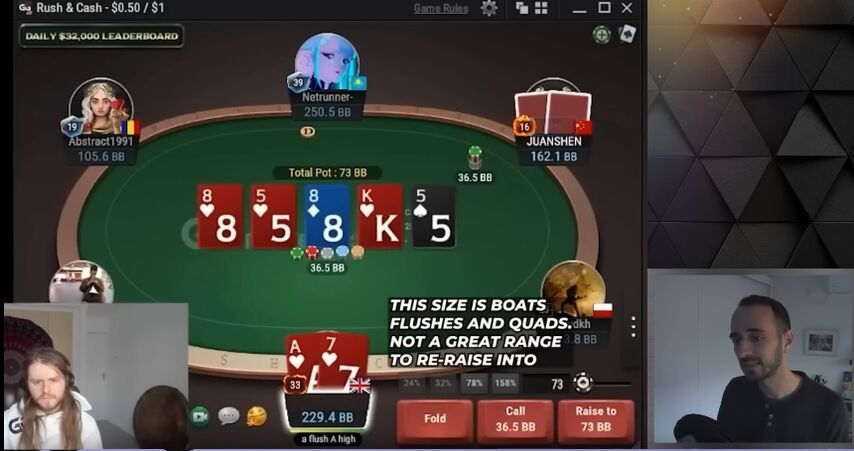
About the pot-bet river, he says that flushes, full houses, and four of a kind use such sizing, so there is no point in raising him. Completely agree with the call.
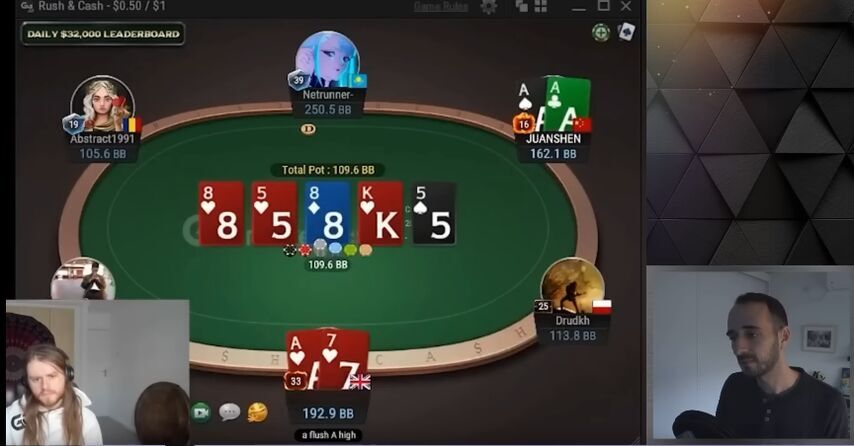
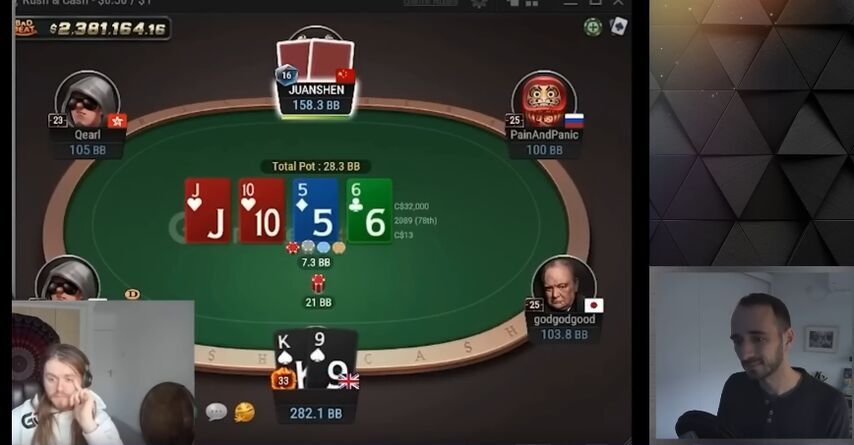
Here Charlie c-bets a third of the pot on the flop, and on the turn, he bets the second barrel for three pots! Is it GTO or not? As for me, it is quite a possible line. The sizing itself is very unorthodox, people are not used to seeing it, their reactions will be more immediate, and Charlie will be able to decipher them. How will the opponent deal with and ? Will he overfold or overcall? Will we double-bluff on blank rivers? All this together will determine whether we have a good bluff or a bad one.
Maybe Charlie thinks Villain would 3-bet and and check-raised on the flop and , and now he just doesn't have enough made hands left to counter a big overbet with the prospect of a huge bet on the river. There's , of course, but there are too few of them – not enough. Are the players on this field ready to play a huge pot with a weak bluff catcher? Unlikely. If so, great exploit! This is clearly not a weight decision made after consulting with the randomizer – Charlie is probably convinced that he will get folds at the frequency he wants.
(Opponent thinks for a few seconds and gives up.)
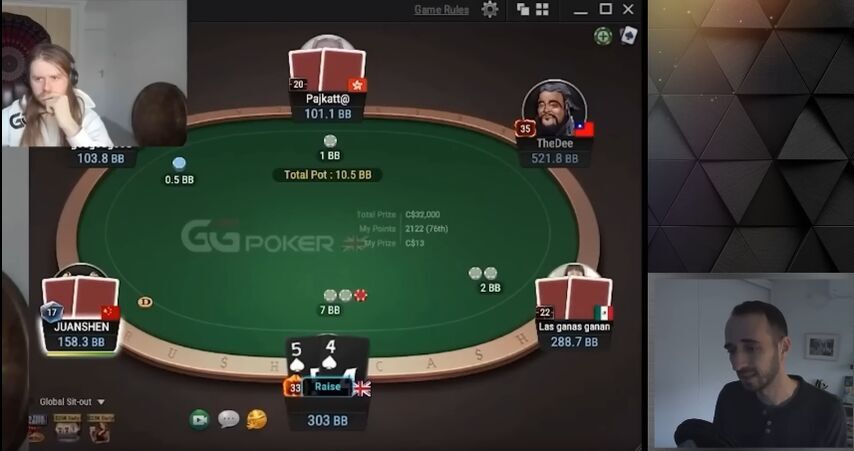
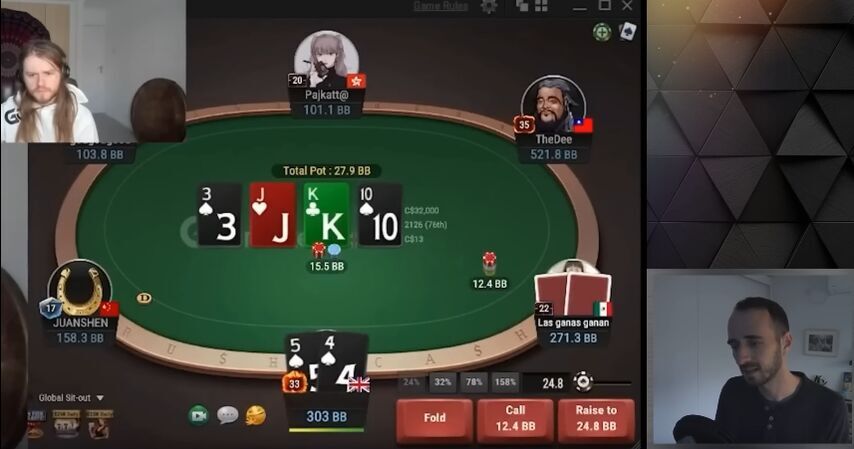
Flop Charlie checks next. This texture can be played with a 100% c-bet with a small sizing, but it can be done in a different way, there is nothing wrong with that either, especially considering that we are driving the opponent into an unusual situation.
The turn he calls.
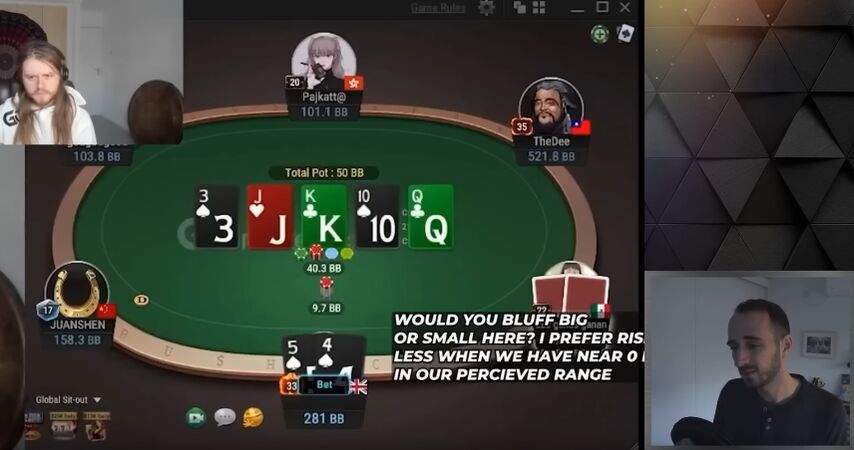
Villain checks on the river and Charlie uses very smart sizing. At the same time, he asks the audience, what size would they prefer to bluff with, big or small. And he answers that he likes to risk a smaller amount when his perceived range has practically no bluffs.
I approach these situations differently and always look first at the part of the range I bet for value. The value here is an ace, but on a board with four cards to a straight, both hands will quite often have an ace and the pot will be split. This feature of the texture leads to the fact that when betting big, we will always split the pot after the call. Only after a significant reduction in sizing will we be able to get calls from weaker combinations. My feeling is that marginal sizing is roughly the same as Charlie's bet size. With bluffs, we obviously bet the same amount as with value. Well played!
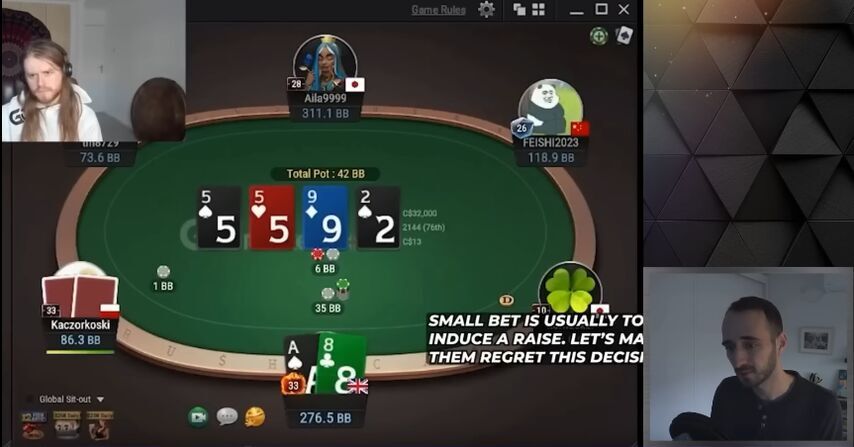
And another cool exploit line after check-checking the flop and checking the turn. Charlie says that small bets are often used to provoke a raise – here's my raise, here you go! Did he regret it?
Opponent folds. Only a machine can balance ranges qualitatively here and resist such aggression. By eye, this should work in 80% of cases. I think we will get more folds.
And with that, I have to end my analysis. I hope you enjoyed it and thanks Charlie for the video!











